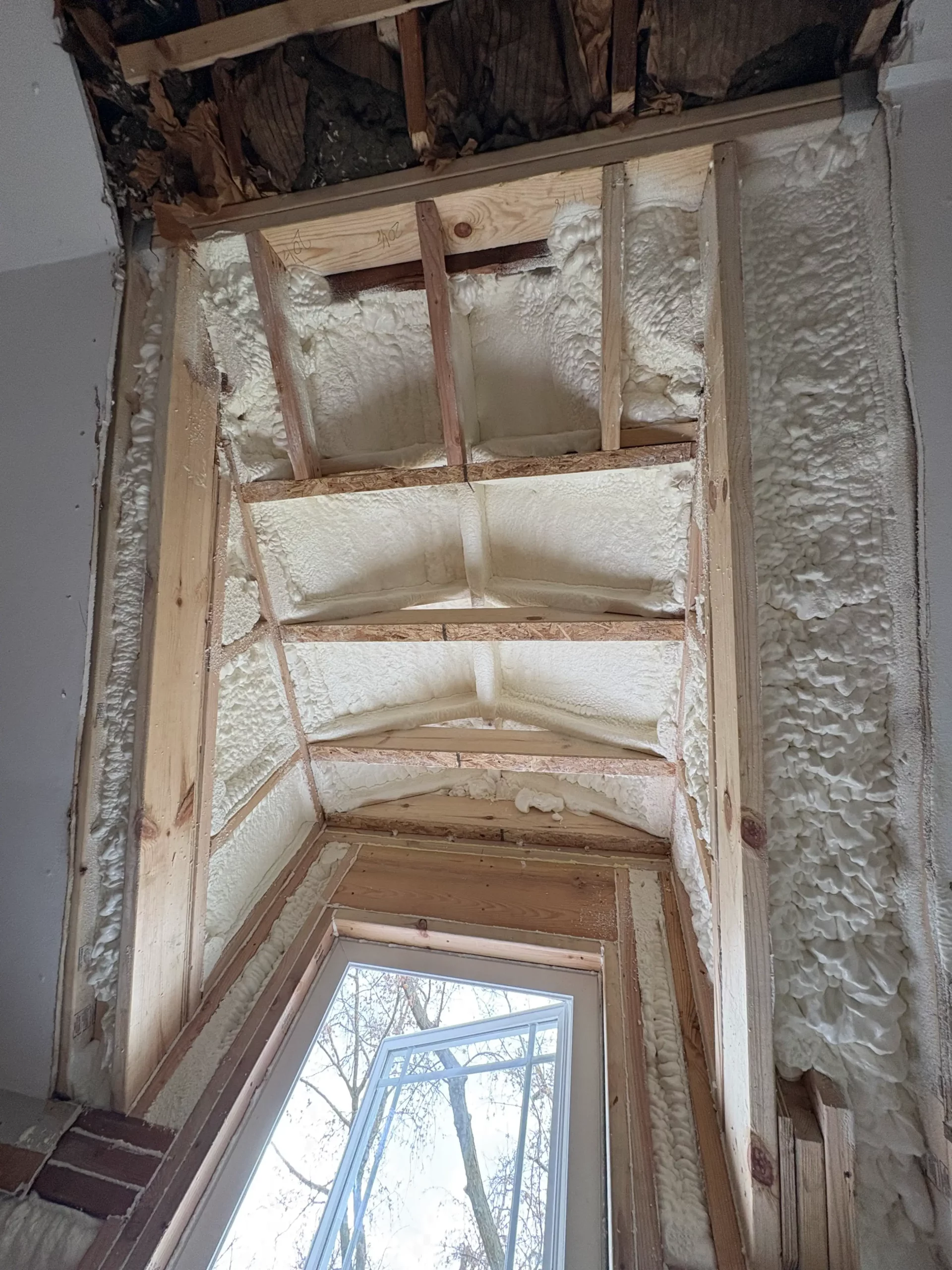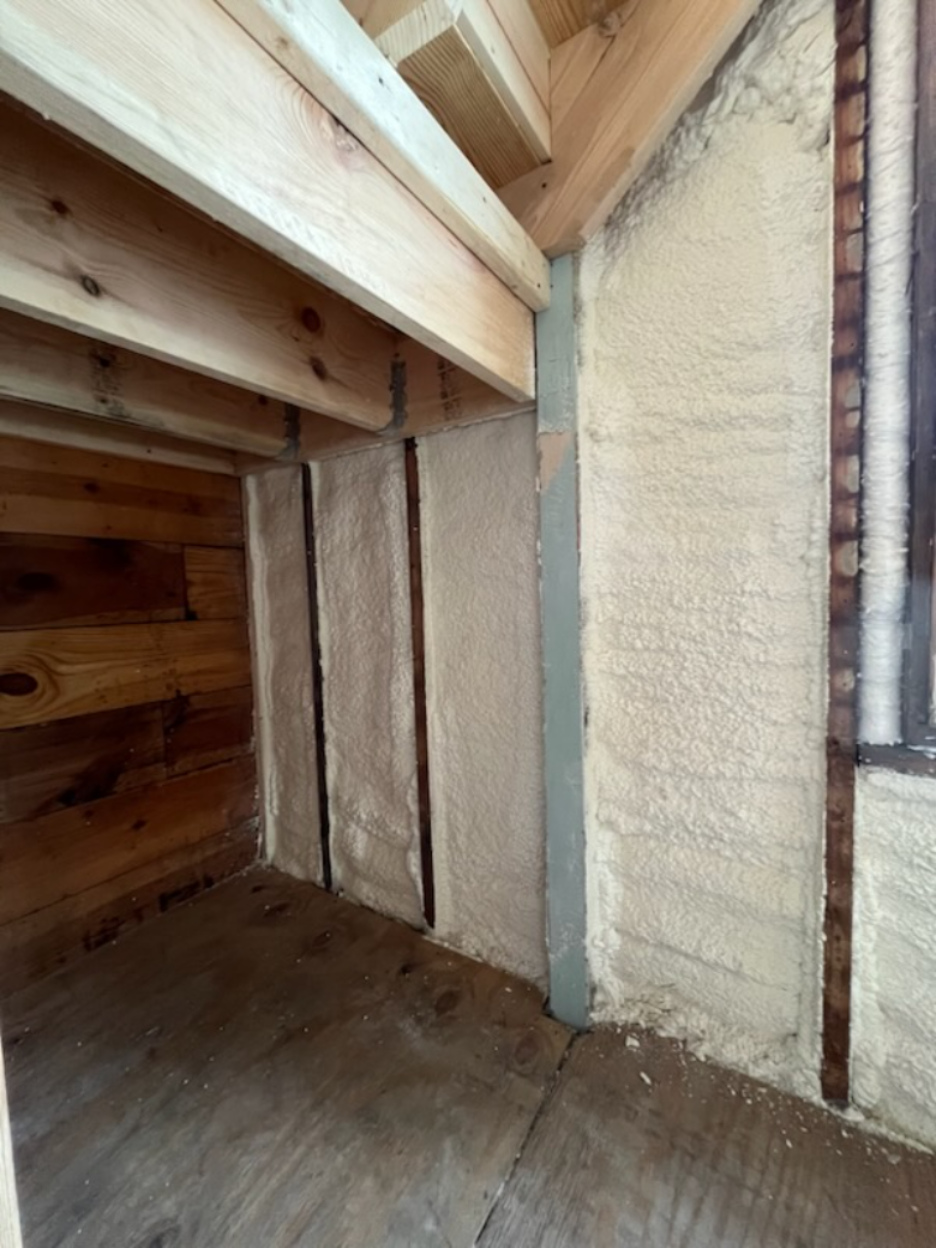
R-value measures how well insulation resists heat flow. Higher numbers mean better insulating power, which keeps homes warmer in winter and cooler in summer. For Chicago homes, where winters bring harsh cold and summers add humidity challenges, picking the right R-value cuts energy bills and boosts comfort.
This guide explains R-value basics, its role in local weather, and practical steps to apply it. Information draws from years of handling insulation projects in the area, offering reliable details to help homeowners make smart choices.
Insulation materials block heat transfer through conduction, convection, and radiation. R-value rates this resistance per inch of thickness. Different insulation materials achieve varying R-values based on their composition. For example, fiberglass batts often hit R-3.1 to R-4.3 per inch, while spray foam reaches R-6.5 or more.
Thickness matters too. A 3.5-inch batt gives about R-11 to R-15, but stacking layers or using denser materials increases the total. Test it yourself: feel the difference between a thin blanket and a thick one on a cold night.
Chicago faces freezing winters with average January lows around 20°F, according to data from the National Weather Service. Without solid insulation, heat escapes fast, driving up heating costs by 20-30% in poorly insulated homes, as noted in a report from the U.S. Department of Energy.
In contrast to these cold months, summers push temperatures to 80°F or higher, making good R-values essential to block humid air. In this climate, attics need R-30 to R-49, walls R-13 to R-21, and floors R-25 to R-30, based on ENERGY STAR guidelines tailored to cold zones like Illinois.
Local wind speeds, averaging 10-15 mph, add pressure on homes. Higher R-values help seal gaps and reduce drafts, a common issue in older Chicago bungalows built before modern codes.
Bonus Tip: Check your attic first. Many Chicago homes lose 25% of heat through uninsulated roofs. Add R-38 loose-fill cellulose there for quick wins.
Building codes in Illinois set minimums, but exceeding them pays off in energy savings. The table below lists suggestions by home area, adjusted for Zone 5 climate.
| Area | Minimum R-Value | Recommended R-Value | Material Examples |
|---|---|---|---|
| Attic | R-30 | R-38 to R-49 | Blown-in fiberglass, cellulose |
| Exterior Walls | R-13 | R-19 to R-21 | Fiberglass batts, rigid foam |
| Basement Walls | R-10 | R-15 to R-19 | Spray foam, foam board |
| Floors | R-19 | R-25 to R-30 | batt insulation, rigid panels |
These values come from the International Energy Conservation Code, which Illinois follows. Adjust for your home’s age; pre-1980 builds often need upgrades to match today’s standards.
Market fact: Chicago households spend about $1,800 yearly on heating, per U.S. Census Bureau data. Proper insulation drops that by up to 15%, saving $270 annually.
Moisture cuts R-value by 50% in wet conditions, a risk in Chicago’s rainy springs. Choose moisture-resistant options like closed-cell spray foam for basements.
Installation quality seals the deal. Gaps reduce effectiveness by 20%, as shown in studies by Oak Ridge National Laboratory. Pros compress materials less during fitting to keep full R-value.
Aging plays a role. Settling fiberglass loses 10-15% over 20 years. Rigid foams hold steady longer. Considering these elements is key when planning insulation upgrades.
Bonus Tip: Pair high R-value with air sealing. Tape joints and caulk cracks around windows to lock in benefits.
Assess your home’s current setup. Pull back a section of drywall or check the attic to spot existing insulation type and depth. Measure it against code minimums for your build year.
Think about energy audits. They reveal weak spots, like uninsulated ducts, which waste 10-20% of heated air in Chicago winters.
Budget for long-term gains. Initial costs run $1,000-$3,000 for attics, but rebates from ComEd cover up to 50%.
Weigh DIY versus pro work. Simple attic tops are doable alone, but walls demand tools and safety gear.
Consider environmental impact. Recycled-content cellulose offers R-3.6 per inch and cuts landfill waste.

Fiberglass averages about R-3.2 per inch, making it a budget-friendly option. Spray foam provides higher performance in tight or irregular spaces. Both can be effective if installed correctly.
Yes, moving from R-11 to R-30 in the attic typically pays for itself within 5 to 7 years by reducing energy use and improving efficiency.
Bonus Tip: Test moisture levels in basements before insulating. High humidity demands vapor barriers to prevent mold growth.
Low R-value lets heat escape, spiking bills and causing uneven temperatures. In Chicago, it strains furnaces, leading to breakdowns during deep freezes.
Add values for each layer. A wall with R-13 batt plus R-5 foam boards totals R-18. Tools from the Department of Energy simplify this.
Yes. Loose-fill cellulose hits R-3.2 to 3.8 per inch, denser than some batts. Spray foam leads at R-6 to 7, ideal for irregular shapes.
Rarely, but excess in walls traps moisture without ventilation. Balance it with proper airflow systems.
Inspect every 10 years or after major weather events. Settling or damage drops performance over time.
R-value gauges insulation’s heat-blocking ability, crucial for Chicago’s extreme weather. Aim for recommended levels in attics, walls, and floors to save energy and stay comfortable. Evaluate your home’s needs based on age, layout, and usage patterns. Match choices to long-term goals like lower bills and durability.
Start with a home energy assessment to pinpoint gaps. Review local rebates and material options suited to your setup. Contact South Chicago Insulation at (779) 803-8025 or [email protected] for guidance on R-value applications in your space. Take time to plan upgrades that fit your budget and home specifics.